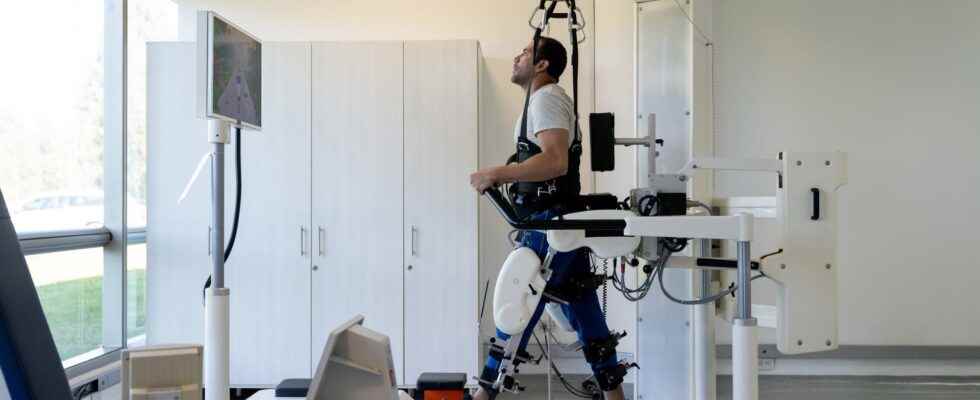An unexpected group of nerves enables paraplegics to walk again after electrotherapy. This is the result of a study on nine paralyzed patients treated with epidural electrical stimulation (EES) of the spinal cord and on mice who were treated in the same way. As a team led by Grégoire Courtine from the Lausanne University Hospital in Switzerland reports, a specific group of so-called interneurons is crucial for the success of the EES. If this cell population is destroyed before the therapy, the EES will be unsuccessful, the working group writes in their publication in »Nature«. It is noteworthy that the interneurons involved are not involved in movements in healthy people – they are apparently misused. The experts expect that the findings will help to further improve epidural electrical stimulation.
It has been known for some years that paralysis caused by severe spinal cord injuries can be partially reversed by electrically stimulating the spinal cord below the injury. In EES, an electrical stimulator is implanted that stimulates the dorsal roots—the leads that carry sensory signals to the spinal cord. At the same time, the paralyzed are hung in a stretcher so that their legs can move. In the Swiss study, the patients went through five months of training, after which they were able to walk independently again with a walking aid – four of them even without the electrical stimulation. So far, however, it was completely unclear how this healing works in detail.
To find out which neurons are involved in restoring leg function, the team first created a detailed atlas of neurons in the mouse lower spinal cord. The group then used a machine learning algorithm to determine which neurons show increased gene activity during EES. In doing so, she encountered a group of interneurons. These cells are usually part of neural circuits that process signals rather than transmit stimuli. However, the EES apparently gave them a new function and now connected the nerve cells of the muscles to the signals from the brain, so that the limbs can be consciously controlled again. So far, however, the therapy is only experimental. In clinical practice, epidural electrostimulation is currently used to treat chronic pain.
